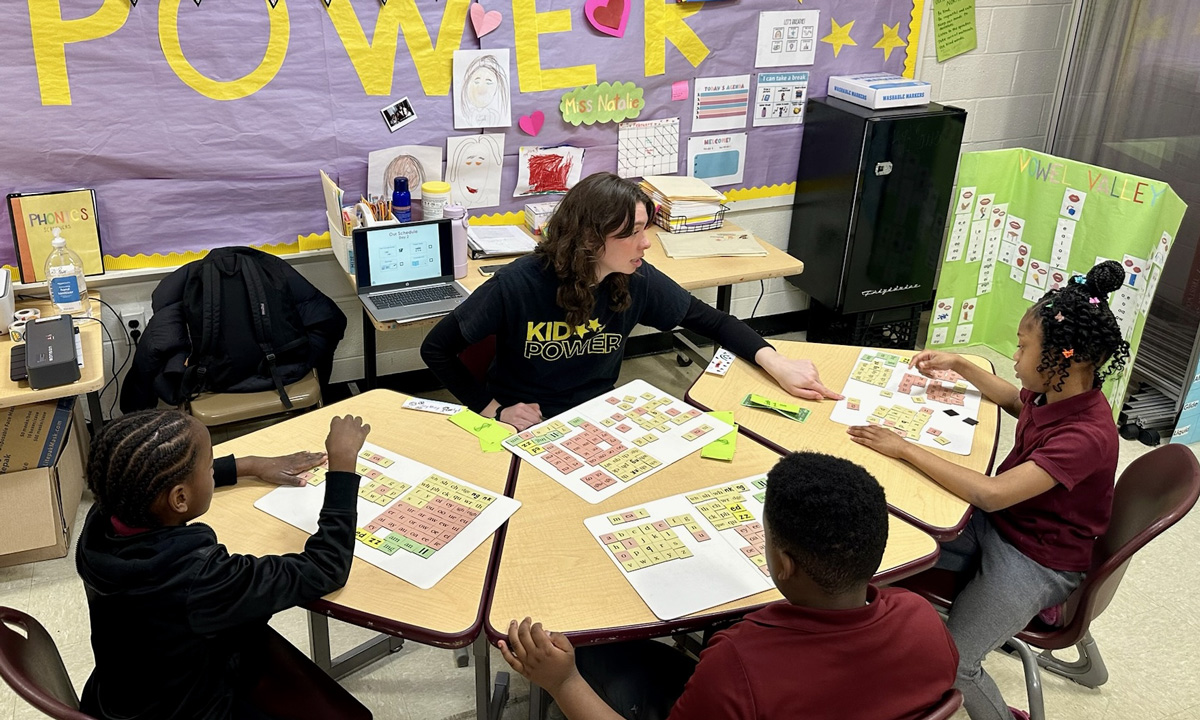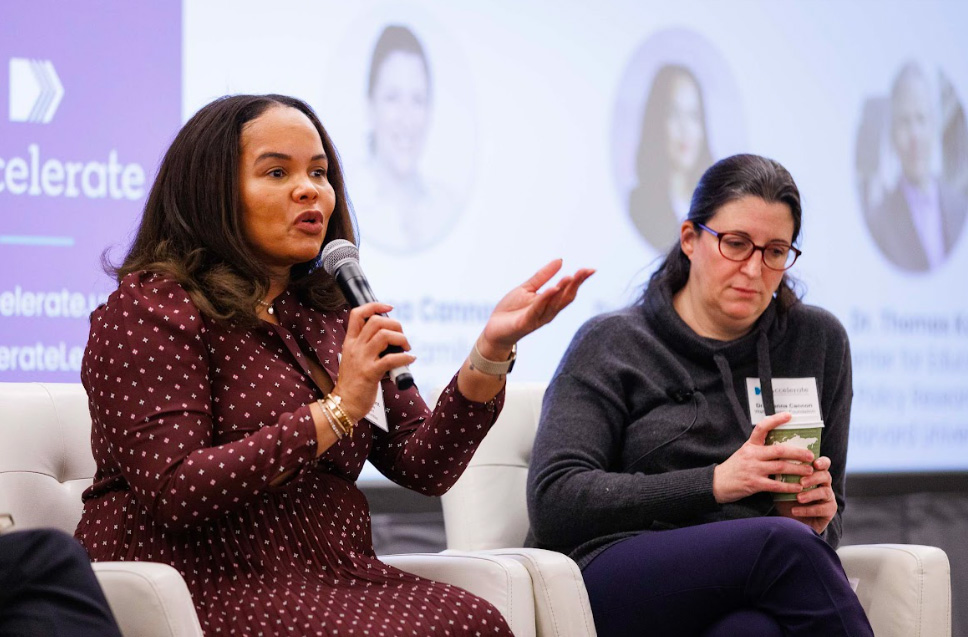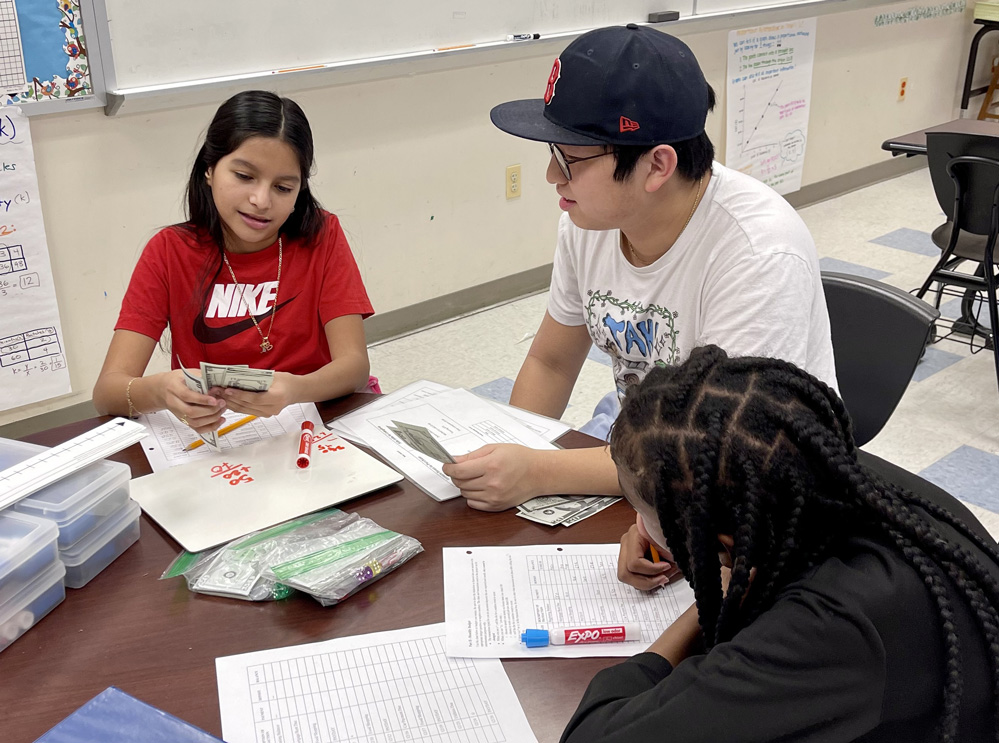Learning Loss Win-Win: High-Impact Tutoring in DC Boosts Attendance, Study Finds
Students who missed at least 30% of school in the prior year improved their attendance by five days — a small, but promising finding, experts say.

Get stories like this delivered straight to your inbox. Sign up for The 74 Newsletter
High-quality tutoring programs not only get students up to speed in reading and math, they can also reduce absenteeism, a new study shows.
Focused on schools in Washington, D.C., the preliminary results show middle school students attended an additional three days and those in the elementary grades improved their attendance by two days when they received tutoring during regular school hours.
But high-impact tutoring —defined as at least 90 minutes a week with the same tutor, spread over multiple sessions — had the greatest impact on students who missed 30% or more of the prior school year. Their attendance improved by at least five days, according to the study from the National Student Support Accelerator, a Stanford University-based center that conducts tutoring research.
Susanna Loeb, who leads the center, called the data “the first evidence of a strong causal link between tutoring specifically and attendance.”
Hedy Chang, executive director of the nonprofit Attendance Works, said it makes sense that students come to school more often when they’re keeping up in class and getting good grades.
“Part of why kids don’t show up is because they don’t feel successful in school,” she said. Forming a connection with a tutor over several weeks or months can also make students more motivated to attend, she added. “I do think it’s an impact of high-dosage tutoring, not necessarily just tutoring.”
The early findings, which will be expanded in a future paper, reinforce the benefits of offering high-impact tutoring during the school day. The extra instructional time helps schools address two of their biggest post-pandemic problems — learning loss and chronic absenteeism, the researchers said. The White House has urged districts to not only target remaining federal relief funds toward those areas, but explore ways to sustain those efforts when they dry up.
Districts that continue tutoring programs will likely keep “student achievement top of mind,” Loeb said, “with greater engagement — including increased attendance — as another outcome they hope to see.”
D.C.’s experience with tutoring also demonstrated how to successfully integrate tutoring sessions into the school day. The state education agency, which has spent $35 million on the program, funds staff members in charge of rearranging the schedule to accommodate the sessions and track data on student participation.
“They took that off the plate of the principal,” Christina Grant, D.C.’s state superintendent, said at a January conference hosted by Accelerate, an organization that works to scale high-dosage tutoring. She added that working with researchers like those from Stanford can help districts communicate the impact of federal relief funds. Without those partnerships, she said, “we would look back three years later and not be able to tell the authentic story around what happened to $35 million.”

The district, which had a chronic absenteeism rate of over 40% last school year, began its tutoring program in 2021. Officials awarded grants to a variety of providers, including Saga Education, which focuses on high school math and American University’s teacher preparation program.
Sousa Middle School, in southeast D.C., works with George Washington University’s Math Matters program, which pays college students interested in STEM or education to work as tutors.
“My challenge, when this program first began, was getting students to come and not look at it as a form of punishment,” said Sharon Fitzgerald, Sousa’s tutoring manager. Now students who have “graduated” out of the program ask why they can’t come back.

Students responded well, she said, because it’s a “break away from seeing their regular teachers every day” and because they look up to the college students. The tutors, she added, also have a clever way of giving students a taste of how much more they’ll learn during their next meeting and if they attend class everyday.
“It was what the tutors left them with in the last session that encouraged them to come to school,” Fitzgerald said.
The results are likely to spark more interest in how tutoring and attendance initiatives can work in tandem.
“We have not intentionally used tutors as a way to address attendance. I can imagine that it could help if part of their work focused on that,” said A.J. Gutierrez, co-founder of Saga Education. “I see potential.”
Chang, with Attendance Works, said the results are “on the right track,” but don’t go far enough. During the 2022-23 school year, several states still had chronic absenteeism rates over 30%, including Alaska, New Mexico and Oregon.
Tutoring doesn’t address all of the barriers that keep students from attending school, like health conditions or bullying, she said. But tutors could refer students to school attendance teams when those concerns surface.
“What more could we get,” she asked “if tutoring was tied to a bigger strategy, a more comprehensive approach?’ ”
Get stories like these delivered straight to your inbox. Sign up for The 74 Newsletter

;)
